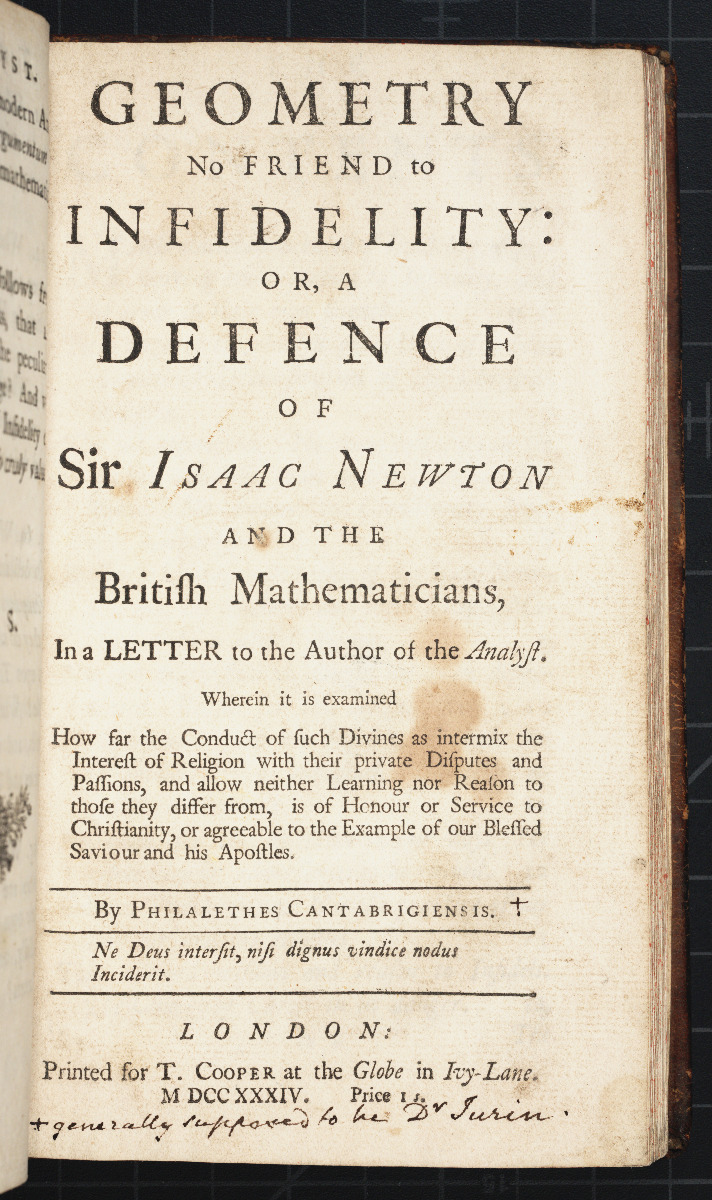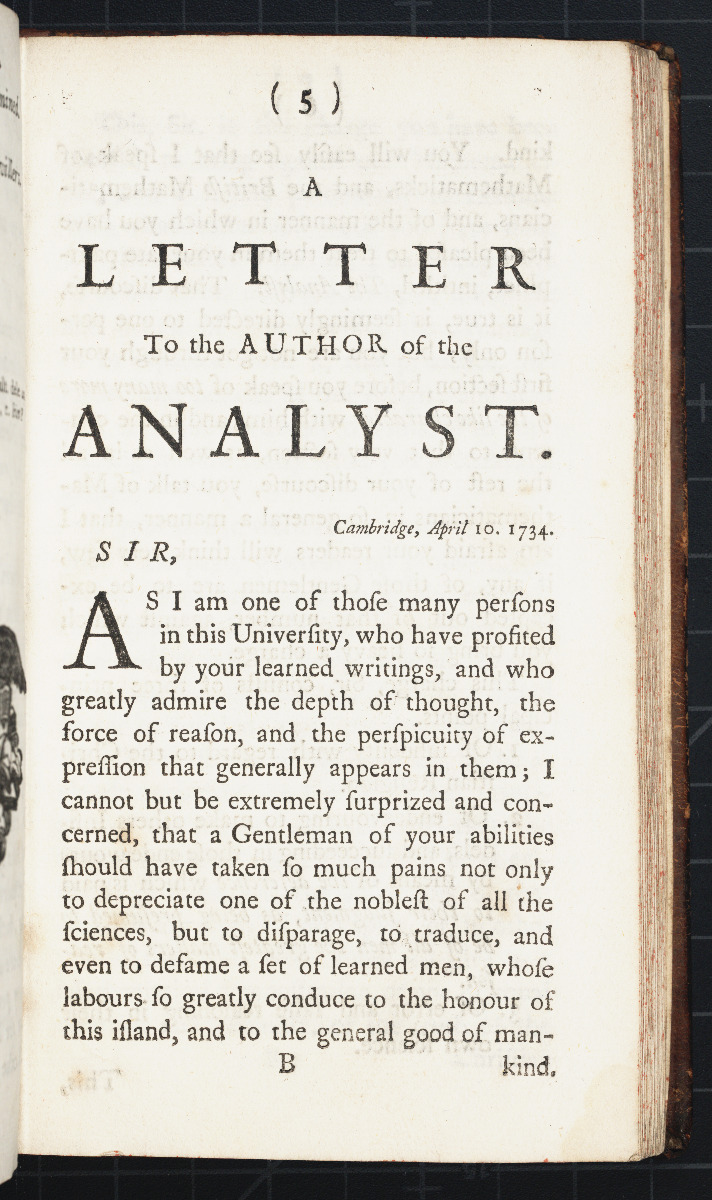- About MAA
- Membership
- MAA Publications
- Periodicals
- Blogs
- MAA Book Series
- MAA Press (an imprint of the AMS)
- MAA Notes
- MAA Reviews
- Mathematical Communication
- Information for Libraries
- Author Resources
- Advertise with MAA
- Meetings
- Competitions
- Programs
- Communities
- MAA Sections
- SIGMAA
- MAA Connect
- Students
- MAA Awards
- Awards Booklets
- Writing Awards
- Teaching Awards
- Service Awards
- Research Awards
- Lecture Awards
- Putnam Competition Individual and Team Winners
- D. E. Shaw Group AMC 8 Awards & Certificates
- Maryam Mirzakhani AMC 10 A Awards & Certificates
- Two Sigma AMC 10 B Awards & Certificates
- Jane Street AMC 12 A Awards & Certificates
- Akamai AMC 12 B Awards & Certificates
- High School Teachers
- News
You are here
Mathematical Treasure: Jurin’s Defence of Sir Isaac Newton
The image below is the title page of Geometry no friend to infidelity: or, A defence of Sir Isaac Newton and the British mathematicians, in a letter to the author of the Analyst. The title page lists the author as Philalethes Cantabrigiensis, but it is believed that the author is actually James Jurin.

Jurin (1684–1750) was a physician and scientist who did work with the smallpox vaccination and capillaries. He was a strong supporter of Sir Isaac Newton; this 84-page work was published in 1734 in reaction to the Bishop George Berkeley’s The Analyst, which had appeared earlier that year. (It was in The Analyst that Berkeley questioned whether fluxions were the “ghosts of departed quantities.” More on Berkeley’s The Analyst can be found on Convergence.) According to Carl Boyer's The History of the Calculus and Its Conceptual Development, this work by Jurin contained weak arguments. However, it was the first of about 30 such works over the next 7 years written in response to the early logical issues in calculus raised by Berkeley. These arguments actually led to work by others, including Colin Maclaurin and the Bernoullis, on making the foundations of calculus more rigorous.
The image below shows the first page after the Table of Contents and the start of the response to Bishop Berkeley.

Two other works are bound with this copy of A defence of Sir Isaac Newton:
- The Analyst, by Bishop George Berkeley.
- A panegyric upon Sir Isaac Newton / translated from the French, pronounced by Mr. Fontenelle before the Royal Academy of Sciences at Paris, by Andrew Reade, with remarks by James Wilson. (More on this eulogy of Newton can be found on Convergence.)
A complete digital scan of Geometry no friend to infidelity, along with A Panegyric upon Sir Isaac Newton, is available in the Linda Hall Library Digital Collections. (The scan of Geometry no friend to infidelity comes first with A Panegyric upon Sir Isaac Newton starting after page 84.) The call number is QA35.B47 1734.
Images in this article are courtesy of the Linda Hall Library of Science, Engineering & Technology and used with permission. The Linda Hall Library makes available all existing digital images from its collection that are in the public domain to be used for any purpose under the terms of a Creative Commons License CC by 4.0. The Library’s preferred credit line for all use is: “Courtesy of The Linda Hall Library of Science, Engineering & Technology.”
References
- Boyer, Carl B. The History of The Calculus and Its Conceptual Development. Dover, 1959.
- Huffman, Cynthia J. “George Berkeley's The Analyst.” Convergence (July 2017).
- Swetz, Frank J. “Mathematical Treasure: Berkeley's Critique of Calculus.” Convergence (August 2015).
- “James Jurin.” Wikipedia. https://en.wikipedia.org/wiki/James_Jurin.
Cynthia J. Huffman (Pittsburg State University), "Mathematical Treasure: Jurin’s Defence of Sir Isaac Newton," Convergence (September 2019)




